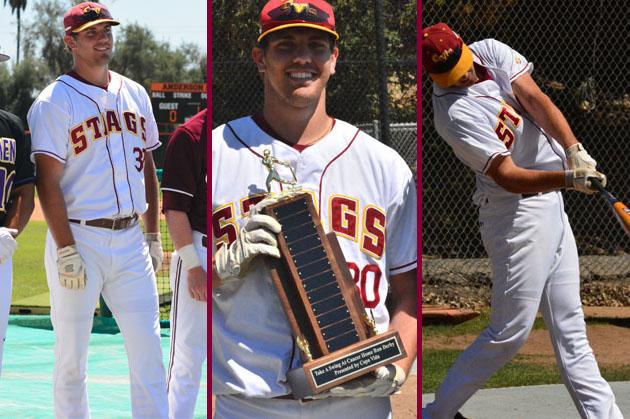
SCIAC schools participate in home run derby fundraiser for cancer; CMS' Rizzo wins home run derby
Release courtesy of Occidental Sports Information
LOS ANGELES — When you think of a home run derby, you think of the biggest names in Major League Baseball during All-Star Weekend every summer. Miguel Cabrera, Prince Fielder, Robinson Cano and David Ortiz come to mind.
You don't think of a handful of SCIAC players and coaches rallying together to raise money for cancer research.
But on Sunday, April 7 at Occidental College's Anderson Field in Los Angeles, players from seven of the conference's nine schools let the long ball fly in the first ever Take a Swing at Cancer Home Run Derby, presented by Copa Vida Coffee Shop in Pasadena. All proceeds went to cancer research at the City of Hope.
John Rizzo, a 6-foot-4, 225 lb. junior from Claremont-Mudd-Scripps, took home the trophy, crushing a towering shot to left field to beat runner up and the favorite Julian Barzilli of Whittier College in walk-off fashion.
"It's amazing and it was a lot of fun," Rizzo said. "I'm glad I got a chance to show what I could do and to help a great cause."
Barzilli is leading all of NCAA Division III with 14 home runs.
Rizzo, a pitcher, squeaked past the first round by edging Redlands' Max Hardman and Pomona-Pitzer's Jake Bruml in a three-out playoff. In the second round, Rizzo found his swing, sending five homers over the wall, edging La Verne's Joe Winterburn and Cal Lutheran's Atherton Kniseley.
Kniseley fed off the adrenaline of going first in Round 1, totaling a round-best six homers.
Each competitor got 10 outs. Any swing that did not result in a home run equaled an out. Four athletes advanced to the second round and two of them made the final.
The Occidental baseball coaching staff organized the event with the help and support of the conference's coaches.
Before the competitive home run contest began, members of the Occidental and surrounding communities made donations to earn their hacks at the plate. A shorter outfield wall of cones was set up around 200 feet for several younger baseball players in attendance.